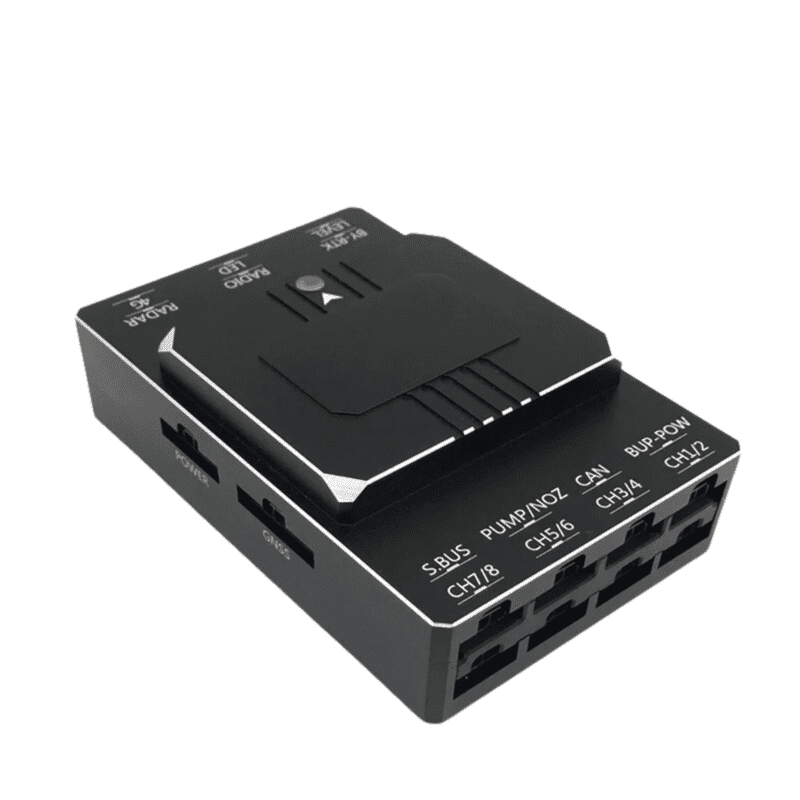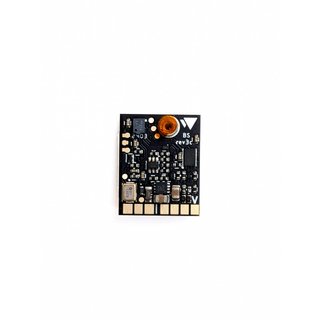SparkNavi Drone Flight Controller and GNSS/INS Made in Taiwan: Precision Navigating for Drones
SparkNavi Drone Flight Controller and GNSS/INS Made in Taiwan: Precision Navigating for Drones
Blog Article
The Relevance of Drone Flight Controllers in Modern Aerial Modern Technology: Key Elements and Their Effect
In the realm of modern-day aerial modern technology, drone trip controllers function as the pivotal systems that manage a drone's efficiency and capacities. These sophisticated devices incorporate vital elements such as microcontrollers and GPS components, facilitating stability and precision in trip operations. Their duty is specifically pronounced in self-governing functions, where advanced formulas improve navigation and obstacle avoidance. As industries significantly depend on drones for applications varying from agriculture to monitoring, the advancing modern technology within flight controllers raises important questions concerning their future influence and potential developments. What developments exist ahead that could redefine our understanding of drone capabilities?

Introduction of Drone Flight Controllers
In the world of aerial technology, drone flight controllers act as the critical mind of unmanned airborne vehicles (UAVs), making it possible for accurate maneuverability and stability during flight. These innovative systems integrate sensor data, refining formulas, and control inputs, enabling drones to execute complicated flight patterns with precision.
Drone trip controllers use numerous sensors, such as gyroscopes, accelerometers, and GPS components, to examine the UAV's positioning and placement in real-time. This details is crucial for keeping balance and ensuring risk-free procedure in diverse environmental problems. The controllers procedure this data to make instantaneous modifications to the drone's motors, enabling for smooth transitions and responsive handling.
Additionally, trip controllers are equipped with innovative software that sustains features such as waypoint navigation, obstacle evasion, and independent flight abilities. This software program is essential for both industrial and leisure applications, where dependability and precision are extremely important. As drone technology continues to advance, the advancement of flight controllers will play a critical function in improving UAV functionality, convenience, and safety and security, ultimately expanding their applications across numerous sectors.
Key Parts Explained
Recognizing the basic components of drone trip controllers is essential for comprehending how these systems run effectively. At the heart of a flight controller is the microcontroller, which functions as the mind, refining data from numerous sensing units and performing commands. Important sensors include accelerometers and gyroscopes, which determine the drone's orientation and activity, offering crucial feedback for stablizing.
An additional trick element is the measure, which evaluates altitude by measuring climatic stress, while general practitioner components provide positional data, allowing autonomous navigation - SparkNavi drone flight controller and GNSS/INS made in taiwan. The trip controller also interfaces with Digital Rate Controllers (ESCs), which manage the speed of the drone's electric motors based upon the controller's commands
Interaction modules, such as radio receivers, help with remote control input, permitting operators to send commands in real-time. In addition, some trip controllers incorporate software that can manage intricate algorithms for waypoint navigating, flight preparation, and telemetry information analysis.
Duty in Trip Stability
Central to keeping trip security, drone trip controllers use advanced algorithms to process sensor data and make real-time adjustments. These controllers are outfitted with a range of sensing units, consisting of accelerometers, gyroscopes, and barometers, which constantly keep an eye on the drone's altitude, alignment, and rate. By analyzing this information, the trip controller can identify variances from the desired flight path and react promptly to maintain security.
For circumstances, if a drone experiences an unanticipated gust of wind, the trip controller can rapidly change the motor speeds to neutralize the disruption, guaranteeing a stable flight trajectory. This ability is vital not only for manual trip operations but also for carrying out intricate maneuvers and preserving smooth flight in various ecological conditions.
.png)
Moreover, the innovative formulas utilized in trip controllers, such as PID (Proportional-Integral-Derivative) control, allow for fine-tuning of the drone's response to adjustments in flight conditions. By maximizing these control parameters, flight controllers can enhance stability, boost responsiveness, and reduce pilot workload. Inevitably, the function of trip controllers in making sure trip stability is vital for the effective and secure procedure of modern-day drones across diverse applications.
Effect On Autonomous Workflow

Self-governing procedures are especially crucial in varied applications such as distribution, agriculture, and surveillance services. With improved trip controllers, drones can autonomously navigate fixed courses, effectively gather data, and adjust to vibrant settings. This capacity lowers the need for constant human oversight, thus enhancing operational efficiency and security.
Furthermore, the execution of machine knowing methods within trip controllers enables drones to boost their efficiency gradually by gaining from previous objectives. This versatility leads the method for more advanced independent applications, such as swarm technology, where several drones collaborate their activities to achieve an usual purpose.
Future Trends in Trip Controllers
Advancements in trip controller innovation are poised to revolutionize drone abilities in the coming years. One substantial trend is the assimilation of expert system (AI) and device discovering algorithms, allowing drones to learn from their atmospheres and make real-time decisions. This advancement will certainly improve autonomous navigation, barrier evasion, and goal preparation, considerably enhancing operational effectiveness and safety and security.
In addition, the growth of advanced sensor click site innovations, such as LiDAR and multispectral imaging, will provide trip controllers with richer data inputs. This will certainly promote extra innovative logical capabilities, permitting drones to discover this conduct intricate jobs, such as precision search, rescue and agriculture, and framework assessments with unmatched precision.
An additional emerging fad is the miniaturization of trip controller parts, which will certainly result in lighter and much more small drones. This development will certainly extend trip periods and haul capabilities, making drones extra flexible for different applications.
Conclusion
In final thought, drone flight controllers serve as vital components in modern airborne modern technology, making certain stability and precision in ability to move with the combination of microcontrollers, accelerometers, and GPS components. SparkNavi drone flight controller and GNSS/INS made in taiwan. Their capacity to enable self-governing operations and adjust to various applications emphasizes their relevance throughout numerous sectors. As advancements in expert system and sensing unit innovation continue to emerge, the capacity for improved abilities and improved functional performance in drone systems will likely reshape the future of aerial applications
Central to keeping trip stability, drone flight controllers use advanced algorithms to process sensing unit information and make real-time modifications. By translating this information, i loved this the trip controller can determine inconsistencies from the wanted trip course and react without delay to maintain stability.
Additionally, the sophisticated algorithms made use of in flight controllers, such as PID (Proportional-Integral-Derivative) control, permit for fine-tuning of the drone's feedback to adjustments in flight problems. Ultimately, the duty of flight controllers in ensuring trip security is vital for the effective and secure operation of contemporary drones throughout diverse applications.
The developments in drone trip controllers not only improve trip security yet additionally considerably influence autonomous procedures. SparkNavi drone flight controller and GNSS/INS made in taiwan.
Report this page